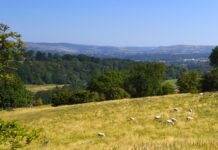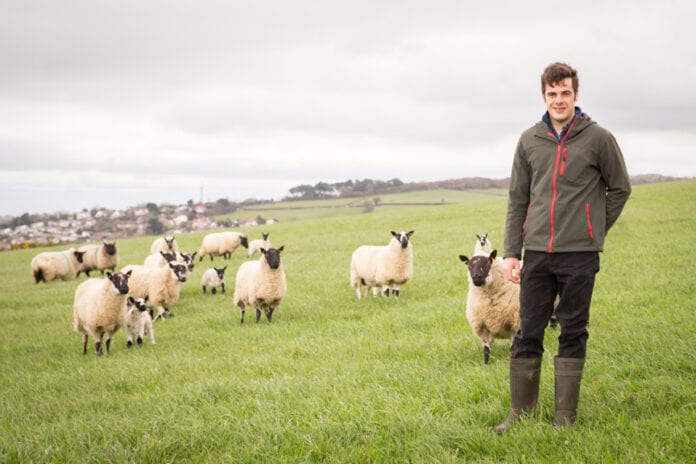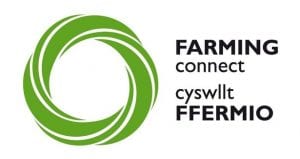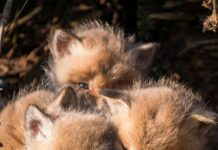The rooting depths of clovers and herbal leys can help Welsh livestock farms reduce nutrient run-off.
Tom Jones is aiming to use multi species leys and rotational grazing to improve feed efficiency and reduce inputs on the beef and sheep farm he runs with his mother near Colwyn Bay.
A Farming Connect Management Exchange Programme-funded study of grazing systems on other Welsh farms has made him aware of the wider benefits of herbal leys.
Not only can they increase daily liveweight gains and cut fertiliser use but they can improve soil structure and decrease nutrient run-off due to their different rooting depths, Tom observed during his study.
He is now planning to finish lambs on herbal leys instead of ryegrass by reseeding a field currently growing a break crop of rape at Fron Farm.
Tom works part time on his family’s 49-hectare farm, which is stocked with 160 ewes, 30 ewe lambs and 12 Aberdeen Angus and Hereford cross cows; some stores are kept through to finishing and others sold at 15 months of age.
Feed, fertiliser and wintering costs are a challenge so Tom is planning to make more of the grass that the farm can grow.
“The intentions and aims of the exchange visits were to learn how to make better use of the grass currently grown on our farm, and to grow more grass on farm without increasing the use of nitrogen fertiliser, to enable the farm to increase the stocking rate and reduce the winter cost of the farm due to a longer grazing season,’’ he explains.
In 2019, Tom visited two very successful livestock enterprises where he gained a great deal of knowledge about grazing techniques.
Armed with that knowledge, he is now confident to measure grass to build farm cover towards the winter.
The grazing season for his cattle will be extended by back fencing to build covers into winter.
Sheep will be fed baled silage from December, earlier than normal, to build covers to allow ewes to lamb outside from 15 March.
“Average farm cover in March and early April has a big effect on grass growth through the spring and summer,’’ says Tom.
In the spring, cattle will be grazed earlier to encourage grass growth and there will be an increased use of back fencing to aid grass recovery.
The size of the areas allocated to stock for grazing will be reduced so that they are not grazed for longer than three days.
Farming Connect, which is delivered by Menter a Busnes and Lantra, has received funding through the Welsh Government Rural Communities – Rural Development Programme 2014-2020, which is funded by the European Agricultural Fund for Rural Development and the Welsh Government.
Help keep news FREE for our readers
Supporting your local community newspaper/online news outlet is crucial now more than ever. If you believe in independent journalism, then consider making a valuable contribution by making a one-time or monthly donation. We operate in rural areas where providing unbiased news can be challenging. Read More About Supporting The West Wales Chronicle



























